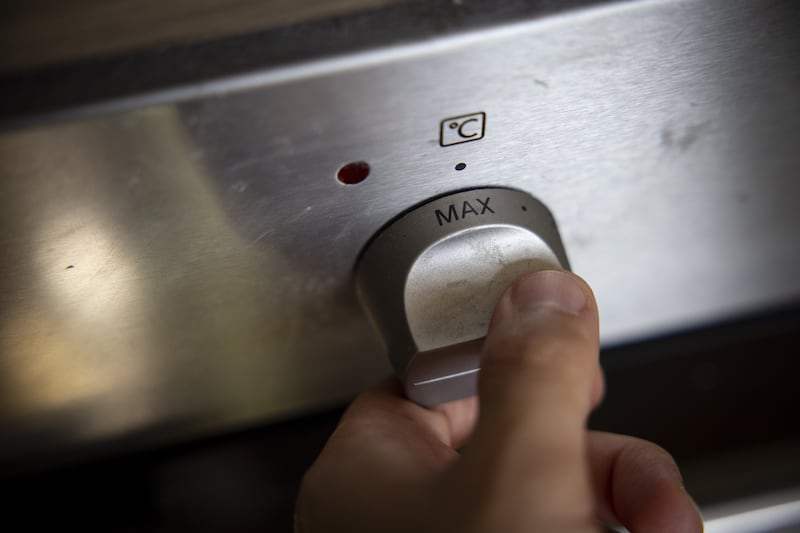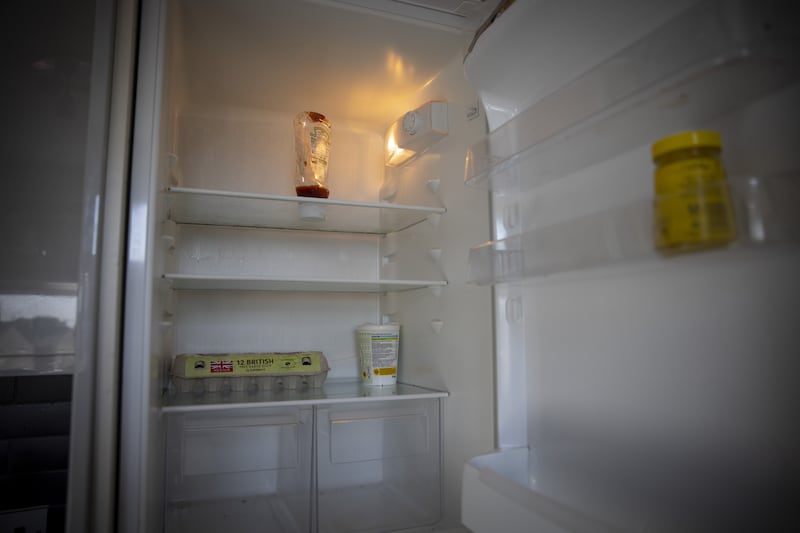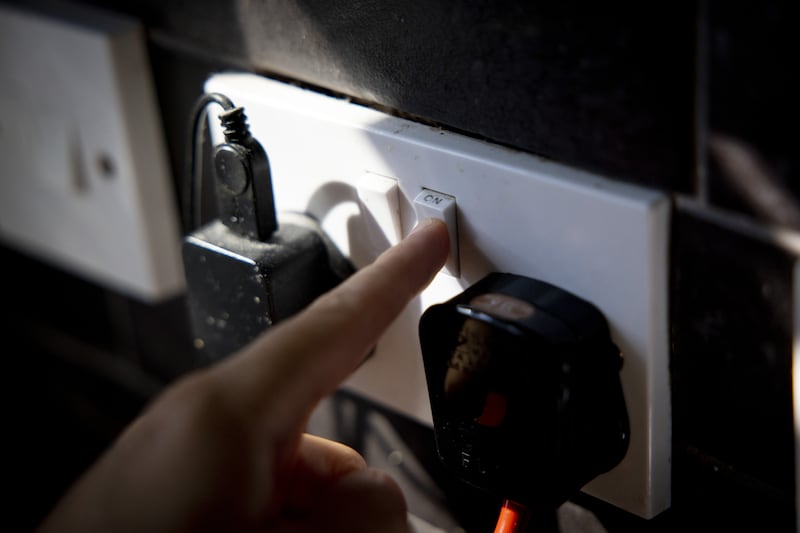We are all going to be asked to micromanage our energy usage over the winter months in a way that has not been seen in this country for generations.
There will scarcely be a light turned on without a question mark hanging over its purpose while the thermostats that set heat levels in our homes are likely to be checked and rechecked with even the slightest move in to the 20s likely to be a cause of concern in many quarters.
While we have not reached the point where we can expect to hear the stern knock of the Glimmerman just yet but with blackouts also on the cards – particularly at the peak times between 5pm and 7pm – we’re definitely heading in that direction.
[ Household bills to soar further as companies warn of ‘entire market malfunction’Opens in new window ]
With Russia’s weaponising of its gas reserves, mounting concern over the capacity of the national grid to manage our energy supply, as well as price increases which will see many Irish households paying over €2,000 more for their energy over the next 12 months than they did in 2021, this will be a winter like no other.
Ed Sheeran has as much right to call himself Irish as The Pogues or The Smiths
‘My husband is obsessed with exercise and sports ... it feels a bit like an affair’
I spend a lot of time with men. It’s taught me to enjoy the silence
Who is the American who left €535,000 to Sinn Féin’s US fundraising group in her trust?
And the grim reality is that the €2,000 extra could quite easily become €3,000 or even more depending on the trajectory of the crisis.
But how are we to monitor how much we use and keep the spending in check – insofar as it is possible to keep it in check – when we don’t know how much the things we rely on every single day to keep us warm, clean, illuminated and fed actually cost?
Everyone knows how much a litre of motor fuel costs because there are signs screaming the prices at us from every forecourt in the State. We know how much we spend on groceries because we have to hand over the money before we can leave the shop.

Read more on the cost of living
Eamon Ryan calls for EU energy intervention to be in place within weeks
Karlin Lillington: Energy-hungry big business should accept paying more for their supply
Q&A: What are the new measures to cut energy use in the public sector?
What are European countries doing to help their citizens with rising energy bills?
Q&A: Why are energy bills going up by so much?
But how much does it cost to have a shower, or heat the livingroom, or have a cup of tea or deck the halls with festive lights and the garden with glowing snowmen as we hurtle to that most wonderful time of the year?
In very general terms, domestic energy follows a 60-20-20 rule.
That means about 60 per cent of a typical bill goes on heating our homes, with 20 per cent needed for heating our water and 20 per cent spent on our electrical appliances including lights. About 2 per cent of our total bill is used for cooking. But to really manage our energy budget we need to drill deeper.
If we use the 60-20-20 rule and readily available figures from energy providers, we can have a stab at establishing the costs although it is worth bearing in mind these are guideline figures only and are based on the average standard unit rate for domestic energy usage which is now just over 43 cent per kilowatt hour used. This time last year it was closer to 25 cent per KWH, meaning prices have climbed a shocking 80 per cent in no more than 12 months.
Heating is the biggest expense but how much it costs depends on many variables. How big is your house? Do you use oil or gas? How many rooms are you heating? What kind of insulation do you have? Do you have a chimney? What is the Ber rating of your home?
With recent increases, few people with a dual fuel service from any of Ireland’s energy companies will have much change out of €3,000 over the next 12 months based on the 60-20-20 rule, with about €1,800 of that spent on heating or homes. If we assume that our heat is on for eight months a year, that works out at €225 a month or about €7.50 every day that it is on. If there are six rooms that need heating, you are looking at €1.25 per room per day.
If you lower the thermostat in your house from 22 degrees Celsius to 20 degrees you could see the daily cost fall to €7. While a decline of 50 cent may not seem like a whole lot, it amounts to savings of about €120 between now and next April.
A shower uses 9.5KWH of energy which would take the hourly cost to €4.05. A 10-minute shower then costs 68 cent. Every minute less you spend in the shower saves you seven cent so if you have an eight-minute shower each day rather than a 10-minute one and you do that for a full year, you will knock another €51 off your annual energy bill.
After the shower comes the hair drying. Such devices use about 2KWH an hour but there won’t be many – if any – people who will need to use one for an hour. But if we allow 10 minutes for the drying of hair, it comes in at 14 cent.
Boiling a kettle for a morning cup of tea will cost 9 cent. Boiling that kettle five times over the course of a day will cost 45 cent although it is worth pointing out that this price is based on boiling a full kettle. If you only put enough water in for a single cup of tea, you will see the cost falling by at least 15 cent a day.
A Nespresso (or similar) machine is more energy efficient and one such device used eight times a day for one minute at a time will cost just 6 cent.
Toasting two slices of bread will cost 3 cent.
Heating a bowl of microwave porridge for the required two minutes will cost 2.5 cent. A microwave uses about 0.8KWH of energy in one hour and if it used for a further 30 minutes over the course of a day then the total price will come in at 34.5 cent.
An old school 60-watt lightbulb and the other bulbs on that scale were not very energy efficient which is why they have been largely replaced in recent times. In contrast, an LED lightbulb in the 6-10 watt range is very energy efficient and if one is left on for 10 hours it will cost no more than 3 or 4 cent. That means if just one such lightbulb lights a room for 10 hours each day between now and the clocks going forward in March, the energy cost will be around €6.*
A washing machine uses about 0.8KWH of energy so a two-hour cycle of washing costs only 68 cent. By contrast, a tumble dryer uses 4KWH of energy and, based on average prices right now, a two-hour cycle to dry your clothes will cost a pretty eye-watering €3.44.
At least the tumbler drier is not likely to be used every day or even multiple times every day, unlike the dishwasher. It requires 0.8KWH for a two-hour cycle which is a further 68 cent. Run your dishwasher twice a day and the cost will climb to €1.36. On a day like Christmas Day when the dishwasher is likely to be on the go constantly, the cost might rise to well over €3.
Spending eight hours working on a desktop computer will set you back 86 cent, although if you switch to a laptop and leave it plugged in for much of the day, the cost falls to 32 cent.

The fridge is one of the very few devices that we have to leave on every hour of every day – and one where there are no savings to be made. Obviously the amount of energy it consumes will depend on how big it is and what it is asked to do. If you have a small ice-box and a waist-high fridge, the cost will be dramatically cheaper than if you have an American-style fridge freeze. But a ballpark figure for running a fridge freezer based on today’s standard unit rates is €1.08 a day.
Using an oven for one hour will add €1.29 to your daily bill while if you bring something to the boil on the stove top it will set you back another 5 cent.
The cost of vacuuming will again depend on what machine you have and how long you are using it and how many times a week you use it. But a 20-minute run around your house with a typical machine will probably set you back 14 cent.
If a television stays on for six hours, it will cost about 25 cent while the Alexa or Google speaker playing music and hanging on your every word will cost another 3 cent a day with the cost of charging your phone coming in at around 2 cent depending on the make and model.*
If you have an electric blanket and turn it on for two hours before you climb into a double bed, it will cost another 19 cent.
Leaving all your devices on standby overnight will cost 10-20 per cent of the cost of actually using them. Again the savings to be made here are very small – maybe only 10 or 20 cent a day – but leaving something on standby when it is not likely to be used is just wasting money and the energy leakage can be stopped without it making any difference whatsoever to the quality of your life.

And finally we come to the Christmas lights. While it is far too early to be thinking about Christmas, the good news is that modern LED lights are a very small drain on your pocket and on the national grid and we are unlikely to be told to bathe our trees in miserable gloom over the season to be jolly. The cost of keeping a few strings of LED lights draped around a tree over Christmas will be not much more than a euro which is at least something to celebrate.
*Figures based on a typical standard unit rate for electricity of 43 cent per KWH.
*This article was amended on Monday, September 12th, 2022 to correct a reference to the energy efficiency of 60 watt light bulbs and to point out that LED lightbulbs are much more efficient. The cost of charging a phone was also corrected.















